Flagstone patio--mortared vs. gravel/sand?????
colbyj
20 years ago
Featured Answer
Sort by:Oldest
Comments (64)
AshaK
20 years agomustangsally52
20 years agoRelated Discussions
Spaced apart fieldstone path; substrate: gravel vs woodchips??
Comments (4)What, exactly, are you trying to accomplish? It sounds like you are after an alpine garden/path/drainage course, which isn't at all a comfortable mix of uses. If you have the stones, try laying out a few in the pattern you are planning, and *walk* on them. Ask other family members to do so also. Keeping to the stones isn't at all a natural gait, but takes paying attention and care with placing feet. Most people will probably end up walking on the non-stone parts of the path a great deal. And the desired fill material is not gravel. If you insist on calling it gravel, people will assume you are talking about gravel. The stones will move on a gravel base. Either sand or the material known to Agway here as Step 2. It has a lot of other names, crushed stone, stone dust, among others. It packs down to form a solid base. Woodchips do not break down into acidic soil. At least not according to the people who decompose things and them test them. Also moss isn't necessarily an acidophile. However, a soil mix of crushed stone and some of your native soil might work quite well. It just generally sounds like you need to do a lot more research into which plants you are interested in growing and what their needs are, and plan to make them a home where people won't be regularly walking on them. If all the property's drainage is going towards this object, both woodchips and stone chips are going to wash out. If you want a path, I'd plan on at least a hopscotch pattern (2,1,2), with the understanding that the plants are part of the path. If you want the area to be a planting bed, then decide which set of plants for specialized beds you are most interested in, research them, and prepare a bed for them. The current situation is total overkill for either of those plans. I'm not convinced I went deeper than 6" anywhere in my dry laid patio, and that was built with rock I dug up on the property, so they aren't dressed in any way....See Morefilling in joints on patio
Comments (1)Clean, just down a few threads is this: Flagstone patio--mortared vs. gravel/sand????? and I think that will help you. I am also about ready to fill between some flagstones in a set of stairs. Moss would look great between stones I bet....See MoreFlagstone entry in Florida
Comments (4)Laying a flagstone path does sound like a lot more fun than fighting with your contractor. Curve vs. straight: this is a design issue that I think needs more context. If your taste doesn't guide you strongly in either direction, you could run this by the landscape design forum (with a photo or a good description of the layout), but be prepared there to hear about any aspect of your house and landscape and not just the path. Tiers vs. slope: sounds like a no-brainer to me; obviously you need to keep the base material in place. Tiers. But you contradict yourself when you say you don't mind flagstone jutting into the grass. Unless you make sort of a "landing" that is flat between the two tiers where you can use that style, you can't do both. And the two types of side don't really mix and match either; the unfinished side would look like you'd forgotten to put the edging in. At best you could do a sequence of pie-piece-shaped sections where the curved edge is contained and forms a step while the sides merge into the slope... might be a bit much though! I'm not qualified to advise on base material. Suffice it to say we just put a concrete paver patio on just sand rather than on sand and crushed rock... (it's not gravel that's used for the base, but rock that has sharper angles and more variety in piece size). There are lots of good books and websites showing how to lay flagstone, and I'd encourage lots of reading. They often showcase nice design ideas too....See MoreConcrete vs pavers vs flagstone patio
Comments (1)We had a similar decision to make last winter and ultimately went with concrete. For us, the look of concrete goes better with the house and it's cleaner because there is no sand between pavers to track inside. That, and it was the cheapest option. Wet-laid flagstone and brick are much nicer but about 5x the cost. Depending on the gravel, there may only be minimal surface prep needed before being able to pour right on top since you're already 4" deep. Especially if you go with concrete, make sure you get someone who knows what they are doing and gives you details on exactly what will be done (rebar spacing, type of concrete mix, finish type, cut lines, etc). It's true that concrete cracks. After 1 harsh winter we have a few _hairline_ cracks (you really have to look to see them) but even so we're still very happy how the slab turned out....See MoreAshaK
20 years agomich_in_zonal_denial
20 years agocolbyj
20 years agomich_in_zonal_denial
20 years agocolbyj
20 years agolazy_gardens
20 years agoBradSwanson
20 years agolazy_gardens
20 years agoRossandBeth
20 years agopootypantz
20 years agobulldinkie
20 years agoJStover24
19 years agoZonetrap
19 years agoHobbyHeidi
19 years agoZonetrap
19 years agozeuspaul
19 years agoOUbrandy
19 years agolazy_gardens
19 years agoOUbrandy
19 years agocalisto
19 years agopatioman
17 years agomoonchildani
17 years agosandyself
17 years agobailey_09
17 years agoorganic_camelia
17 years agortheidler
17 years agomichelle2yard
17 years agojustadncr
17 years agomichelle2yard
17 years agojustadncr
17 years agoretwoner9_azteca_com
17 years agosilbc_email_unc_edu
16 years agodougy2040
15 years agodeckedout
15 years agoglensgardengirl
15 years agokaydye
15 years agoearlybirdz5b
15 years agokathypdx
15 years agosierra3
15 years agoPMeans123_hotmail_com
15 years agofletcher_tc_gmail_com
13 years agotls2train_aol_com
13 years agojay21868_yahoo_com
13 years agochris_brookesystems_com
12 years agolcdavis04
7 years agoGlen Cumbus
6 years agoLisa Meggs
2 years ago
Related Stories
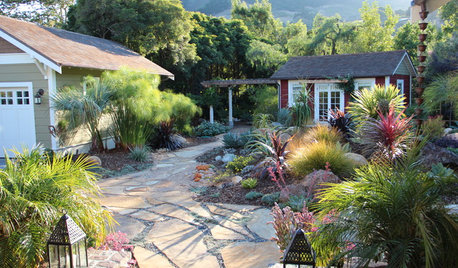
GARDENING AND LANDSCAPINGPave the Way to Landscape Style With Flagstone
Define a patio, build a path, make a fire pit ... learn about flagstone's many uses, plus costs and considerations, here
Full Story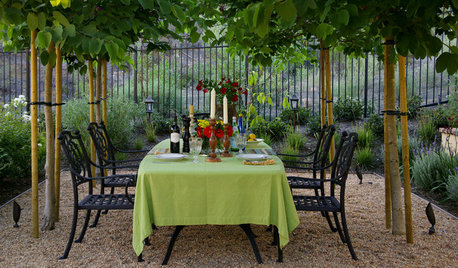
LANDSCAPE DESIGNEnjoy the Romance of Dining in a Classic Gravel Garden
Here’s what to consider when it comes to installing, styling and maintaining a DIY-friendly gravel patio
Full Story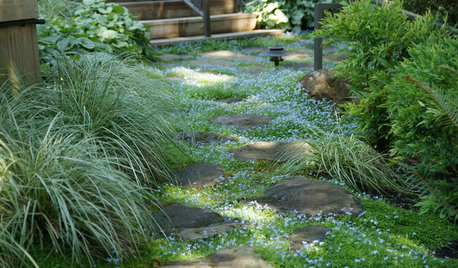
LANDSCAPE DESIGNHow to Pick the Right Floor for Your Garden Room
Crunch the facts on gravel, flagstone, brick, tile and more with our mini guide to outdoor flooring surfaces
Full Story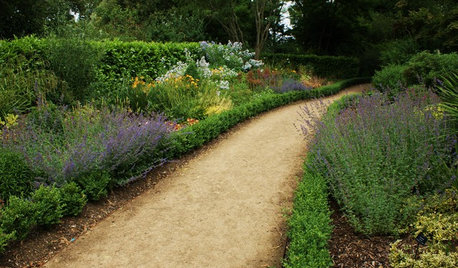
LANDSCAPE DESIGN5 Gravel and Stone Types for a Rockin' Landscape
Give your garden design some textural bam with pebbles, granite, river rocks and other permeable materials
Full Story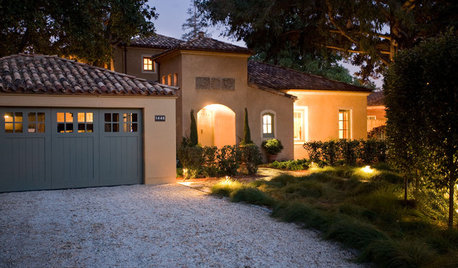
REMODELING GUIDESGravel Driveways: Crunching the Pros and Cons
If you want to play rough with your driveway, put away the pavers and choose the rocky road
Full Story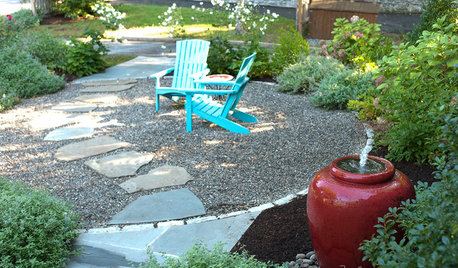
GARDENING AND LANDSCAPINGPatio Pavers Rock Out
Pair stone or gravel with bigger pavers for a patio design that guests will pay tribute to
Full Story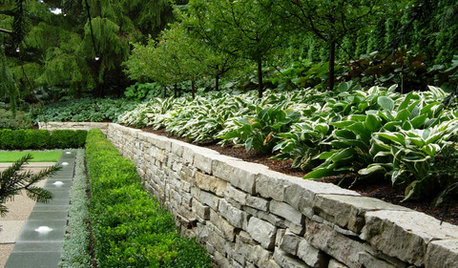
LANDSCAPE DESIGNGarden Walls: Dry-Stacked Stone Walls Keep Their Place in the Garden
See an ancient building technique that’s held stone walls together without mortar for centuries
Full Story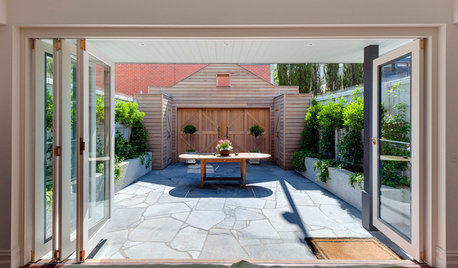
LANDSCAPE DESIGNHow to Pick the Right Paving and Decking Material
Once you’ve got the walls or fences of your garden figured out, it’s time to consider the ground surface or floors
Full Story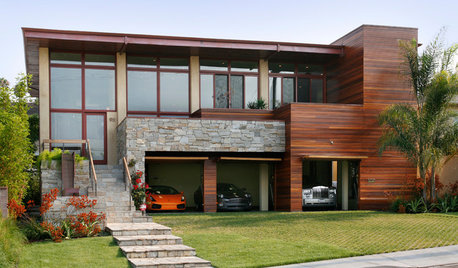
LANDSCAPE DESIGNLandscaping Tricks to Manage Stormwater Runoff
Help rainwater absorb slowly back into the earth with paving grids, gravel beds and other porous systems
Full Story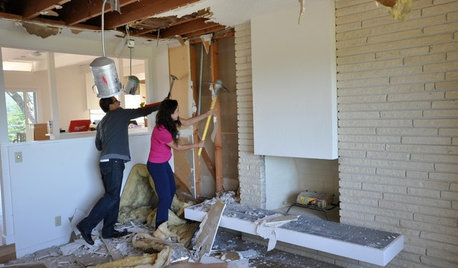
REMODELING GUIDESWisdom to Help Your Relationship Survive a Remodel
Spend less time patching up partnerships and more time spackling and sanding with this insight from a Houzz remodeling survey
Full StorySponsored
More Discussions




dawgie